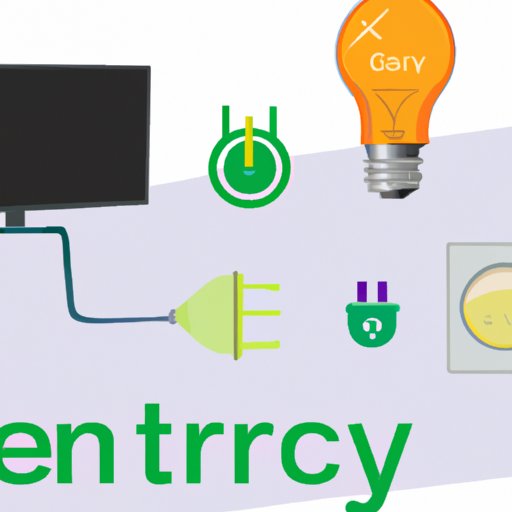Introduction
Electricity is an essential part of modern life, and it’s something that many of us take for granted. But with rising energy costs, it’s important to understand exactly what uses the most electricity in a house and how to make our homes more energy efficient. In this article, we’ll explore the major sources of electricity consumption in the home, provide tips on how to reduce your electricity bill, and discuss ways to make your home more energy efficient.
Analyzing Electricity Usage of Common Household Appliances
When it comes to electricity usage in the home, certain appliances are bigger energy hogs than others. The biggest energy consumers in the home are typically air conditioners, water heaters, dryers, and refrigerators, which can account for up to half of a home’s total energy consumption. Other major sources of electricity consumption include lighting and electronics, such as televisions, computers, and gaming systems.
In addition to these major electricity users, there is also the issue of standby power consumption. Many appliances, even when they are turned off, still use some electricity to maintain their settings or to stay connected to the internet. Standby power consumption can account for up to 10 percent of a home’s total energy consumption.
How to Calculate Your Home’s Total Energy Consumption
To determine your home’s total energy consumption, you first need to calculate your base load, which is the amount of energy used by your home’s essential appliances and systems. This includes lights, refrigerators, and other appliances that are always running. You can estimate your base load by adding up the wattage of each appliance and multiplying it by the number of hours it runs per day.
Once you have calculated your base load, you can then estimate your peak loads, which are the additional energy needs of appliances that are used intermittently. This includes things like air conditioners, dishwashers, and washing machines. To calculate your peak load, you can add up the wattage of each appliance and multiply it by the number of times it is used per day.
Finally, you can calculate your total energy consumption by adding your base load and your peak load. This will give you an accurate estimate of your home’s total energy consumption.

Identifying Areas for Energy Efficiency Improvements
Once you have calculated your home’s total energy consumption, you can then assess its current level of efficiency. Look for areas where you could make energy-saving upgrades, such as replacing old appliances with newer, more energy-efficient models or installing energy-saving light bulbs. You should also consider implementing a programmable thermostat, which can help you save energy by automatically adjusting the temperature in your home.

Exploring Options for Reducing Electricity Usage
There are a number of ways to reduce your electricity usage and lower your energy bills. One option is to explore renewable energy sources, such as solar or wind power. You can also implement smart technology, such as smart thermostats, which can help you better manage your energy usage. Finally, you can take advantage of energy-saving programs offered by your utility company, such as time-of-use rates or demand response programs.
Conclusion
Understanding what uses the most electricity in a house is key to managing your energy consumption and lowering your bills. Major energy hogs in the home include air conditioners, water heaters, dryers, and refrigerators, while standby power consumption and electronics can also contribute to high energy bills. To calculate your home’s total energy consumption, you need to determine your base load and peak load. Identifying areas for energy efficiency improvements and exploring options for reducing electricity usage, such as renewable energy sources and smart technology, are also effective ways to save on energy costs.


